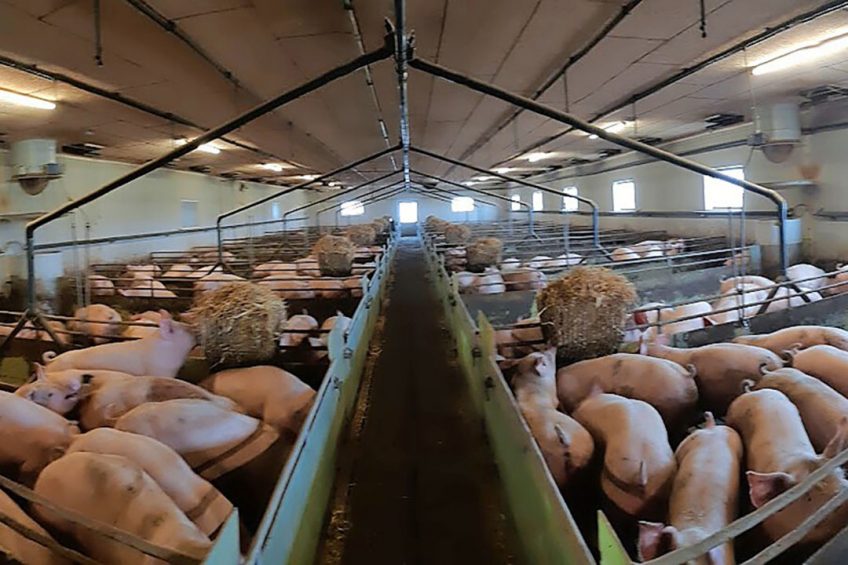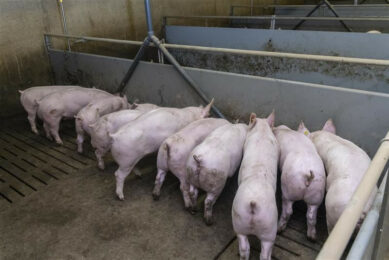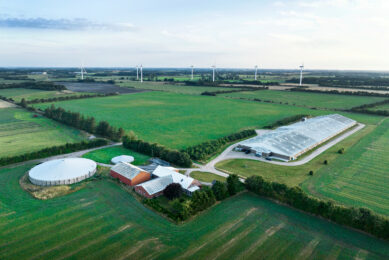No historical data but fresh info from the barn

Improving pig performance requires proper management and proactive response. Online decision support can help with that, as can support based on data from the pigs currently in the barn.
For many producers of finisher pigs, the traditional way to evaluate productivity is to compare historic data of carcass weight for a batch of pigs with an average amount of feed fed to those pigs during their growth period. Those data are then benchmarked with similar data from the previous batches of pigs, or perhaps with a defined target value for herd-specific productivity in order to evaluate whether the last batch of pigs performed satisfactorily or not. In other words, each new batch of pigs is managed based on historic data from previous batches, and the degree of success for the current batch is evaluated when that batch itself is history too.
Using cameras on-farm
So, could real-time data instead of historic data be used for management? That question was key in a trial that formed part of the project PigSys, an international ERA-NET research project. To answer the question, camera-based, automatic weighting systems were chosen. They are an example of a data source which can be used actively in data-driven management. Such systems provide daily information on the weight of pigs in the current batch, which makes it possible for the farmer to evaluate productivity during the present growth period and implement interventions for the current batch or optimise managerial parameters like climate control and feeding strategy for upcoming batches before new pigs are inserted. Data from camera-based weightings of the pigs as well as climate data automatically monitored in two Danish farms (A and B) laid the groundwork for optimised productivity and management in both farms.

Farm A: Group daily gain estimates
As part of the trial, farm A was given estimates of the daily gain of a group of pigs. The farm had ad libitum dry feed automates in each pen with weighting cameras placed above those automates in 24 selected pens in the herd. Whenever a pig in the pen was eating, the camera took a picture, and the weight of the pig was estimated based on those pictures. The daily output from the weighting system was the average of all weightings from four pens per 24 hours.
The pig producer actively used graphs from the weekly reports to benchmark the productivity of each batch against previous batches. During the project period he optimised his feeding strategy as well as his strategy for room temperature at insertion of a new batch of pigs (see Figure 1).
If the growth in a section diverged from what was expected, the farmer used the information from water data, feed data and temperature data to optimise his management routines.
Farm B: Individual daily gain estimates
As part of the same trial, farm B was given estimates of the daily gain of the individual pigs. That farm applied a restrictive liquid feeding strategy. Until the experimental setup used in this project was developed, no camera-based weighting system could be used in farms with restrictive liquid feeding. This is because the camera is traditionally placed above the feeding trough, but with restrictive liquid feeding the pigs stand shoulder-to-shoulder and eat at the same time two to three times a day when the feed is rationed. That makes it impossible for the weighting algorithm to distinguish the pigs from each other and generate a weight estimate.

For the PigSys project, a prototype setup was developed that made it possible to generate camera-based weightings of individual pigs in farms with restrictive feeding.
In 12 pens (four pens each in three sections), the drinking nipple above the feeding trough was replaced by a drinking bowl which was placed on the wall opposite the feeding trough. A 3D weighting camera was placed directly above the drinking bowl to take pictures of each pig when it drank. Each pig in the pens with cameras had unique Radio Frequency ID ear tags (RFID) in their right ear, and next to the drinking bowl an RFID reader was mounted to read the ear tags and pair the ID with the camera-based weight estimate. The daily output from this weighting system was individual weight curves for each pig in each of the pens equipped with the system.
For a number of pens the weight data, reported to the pig producer in weekly reports, showed an increased variation between the individual growth curves in the same pen or a stagnation in growth for multiple pigs at the same time around three days after a change in feed mixture (see Figure 2). The producer actively used this information to improve the management of changes in feed mixture as well as of feed composition.
Improvement of feeding strategies
Both group weights at farm A and individual weights at farm B were driven by data from the pigs while the pigs were still in the barn. The producers received information about growth rate and responses to changes in feed mixtures. That led to improvement in the feeding strategies on both farms. Both pork producers experienced significant improvements in the support of their management compared to traditional management systems they have used so far, which are based on historic data from previous batches.











